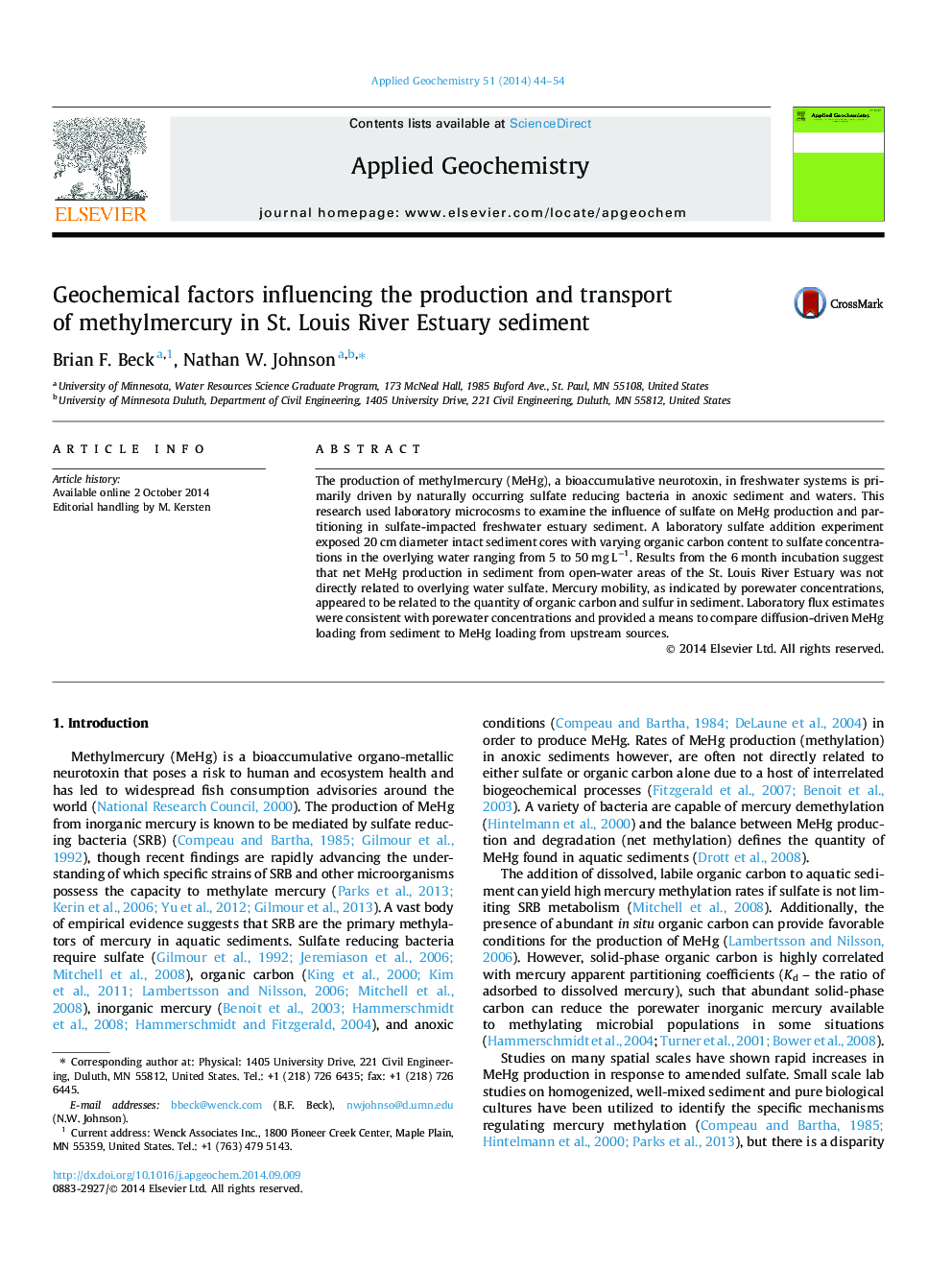| Article ID | Journal | Published Year | Pages | File Type |
|---|---|---|---|---|
| 6335088 | Applied Geochemistry | 2014 | 11 Pages |
Abstract
The production of methylmercury (MeHg), a bioaccumulative neurotoxin, in freshwater systems is primarily driven by naturally occurring sulfate reducing bacteria in anoxic sediment and waters. This research used laboratory microcosms to examine the influence of sulfate on MeHg production and partitioning in sulfate-impacted freshwater estuary sediment. A laboratory sulfate addition experiment exposed 20 cm diameter intact sediment cores with varying organic carbon content to sulfate concentrations in the overlying water ranging from 5 to 50 mg Lâ1. Results from the 6 month incubation suggest that net MeHg production in sediment from open-water areas of the St. Louis River Estuary was not directly related to overlying water sulfate. Mercury mobility, as indicated by porewater concentrations, appeared to be related to the quantity of organic carbon and sulfur in sediment. Laboratory flux estimates were consistent with porewater concentrations and provided a means to compare diffusion-driven MeHg loading from sediment to MeHg loading from upstream sources.
Related Topics
Physical Sciences and Engineering
Earth and Planetary Sciences
Geochemistry and Petrology
Authors
Brian F. Beck, Nathan W. Johnson,
